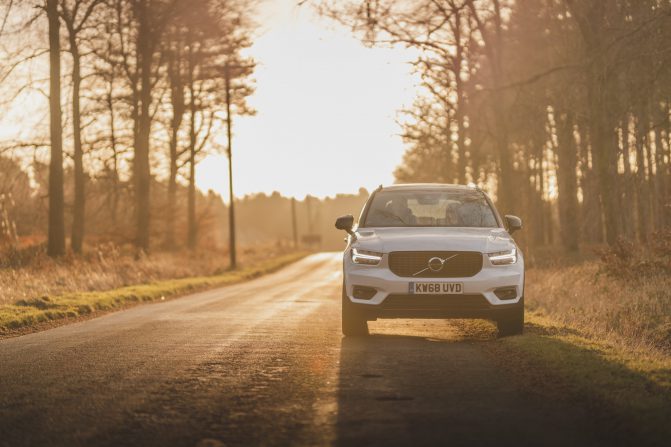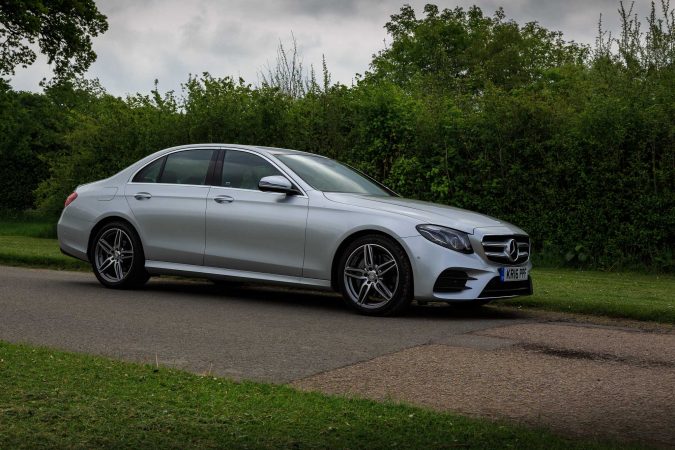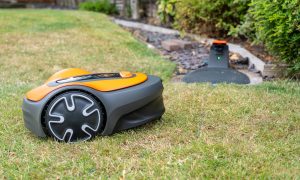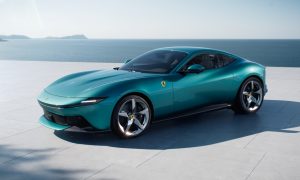The Eco-Friendly Toyota Prius Offers Class-Leading Reverse AEB as Standard
Safety, along with fuel efficiency and low emissions, have been the top priority in the automotive industry. That is to say, brands are investing on technology to increase car safety, improve the driving experience and save human lives. Technologies like Pedestrian AEB (Autonomous Emergency Breaking), Road Sign Assist, Head-Up Display and Lane Support could help to reduce the 400 pedestrian deaths in traffic every year in the UK. Plus, if these safety systems came as standard in all affordable cars, the £1.7 billion in annual parking damage bills would decrease. 80 percent of the top ten safest cars have some kind of Lane Support System as standard, with attention to small SUVs like Peugeot 3008 and VW Tiguan.
Safety Must Come as Standard
For that reason Thatcham Research, an independent car research centre, has awarded the vehicles at the vanguard in preventing accidents in daily life. Above all, the Toyota Prius won the 2017 What Car? Safety Award for pioneering by having the Reverse AEB as standard. The Euro NCAP testing programme introduced the AEB system in June 2016, in order to reduce the 400 deaths on British roads every year. Toyota has been an example for its unceasing commitment on safeguarding drivers all over the world.
According to Peter Shaw, Chief Executive at Thatcham Research, cars are becoming safer every single year and 2016 was a remarkable year for automotive safety. In other words, the biggest auto brands are adding active safety systems in more mass market cars. All ten vehicles examined by the judges had the Pedestrian AEB system as standard. It’s worth mentioning Audi, Alfa Romeo, Renault, Ford, Volkswagen, Seat, Hyundai, Peugeot and Mercedes-Benz for their investment in auto safety.
Safest Car of the Year
However, you must give a round of applause to the Toyota Prius for achieving the highest score in all areas of testing in 2016. The eco-friendly model not only has the Reverse AEB, but also has Road Sign Assist, Head-Up Display, Lane Support and Pedestrian AEB. The Reverse AEB is found in less than ten vehicles around the world and Toyota is the first brand to adopt the class-leading system as standard. It’s noteworthy that all Toyota’s models achieved a Five-Star Euro NCAP score in recent years. At the moment, the Prius is the only car in the UK to offer Reverse AEB as standard.
Matthew Avery, Director of Safety Reseach at Thatcham Research said: ”…Safety should not have to come at a premium and the Prius is a great example of a relatively inexpensive car which features a vast amount of safety tech as standard.”
Pedestrian Protection
The Euro NCAP introduced the testing for Pedestrian AEB as the ultimate requirement for the Five-Star Award in 2016. The safety programme checks how well the vehicle automatically detects and avoids collisions with pedestrians. Moreover, Thatcham Research estimates the AEB systems could potentially save 1,100 lives and prevent more than 100,000 injuries over the next 10 years.
The Reverse AEB automatically breaks or slows down the car when a potential obstacle is detected whilst you’re reversing, avoiding a crash. Studies say that parking damages represent 25 percent of all insurance claims in the UK and 75 percent of the accidents happened whilst reversing. Also, the Reverse AEB could protect the biggest victims to reversing vehicles such as the elderly, children and cyclists.
The Safest Small SUVs
The hottest segment in the UK is the small SUVs, which represents 22 percent of the market since 2015. It has two highly commended models, the Tiguan and the Peugeot 3008. Both vehicles offer high levels of active and passive safety systems. These family cars have scored highly for occupant protection. The VW Tiguan for example has IsoFix as standard, plus Lane Support Sytems and Head-Up Displays − to keep the drivers’ eyes on the road.
Although all these technologies are a huge advance in automotive safety, the motorists still find them rather annoying. Some systems are considered intrusive and they choose to turn them off, according to What Car? Editor, Steve Huntingford. On the other hand, intelligent intervention and unobtrusive warnings would be a great asset for drivers.
The Results of What Car? Safety Awards are in!
Based on the 2016 Euro NCAP ratings, the safest cars in 2017 are:
Alfa Romeo Giulia
Audi Q2
Ford Edge
Hyundai Ioniq
Mercedes-Benz E-Class
Peugeot 3008
Renault Scenic
Seat Ateca
Toyota Prius
Volkswagen Tiguan






I’ve actually had AEB almost get me killed, so I prefer not to have it.
I had a car change lanes too close for comfort. I did a quick dab on the brakes to ensure we did not have contact, simultaneously checking my mirrors. The AEB triggered. There was a semi trailer bearing down behind me. By the time I figured you had to hit the accelerator to make the brakes release, there was smoke billowing off his wheels. A spurt of full-noise to get back onto the rear bumper of the clown who cut me off and I was safe, but damn it made my butt cheeks clench!
I’m of the opinion that ABS is the vital feature. A good whack on the brakes to let the ABS do it’s thing but you as the driver remain in control is safer. Stability control, yes, because it too does not make the car do anything unexpected. AEB, however, can make the car do something you don’t expect, which can be dangerous as I learned.
But then, I learned to drive when stability control involved counter-steering, ABS required less pressure on the brake pedal, hill starting without roll-back needed the hand brake and you had to reverse park to get your licence.
One could also contend that AEB saved your life by avoiding the collision with the clown in front of you (you obviously didn’t react in time to the cut-in, since AEB braked for you). And you still managed to evade the truck coming behind you …
It all boils down to knowing the capability of your on-board systems, knowing at all times which are on / which are off and how the ones that are on are set. This is no easy feast (I think I belong to the same generation of drivers as yourself) but it can be beneficial and save lives eventually.